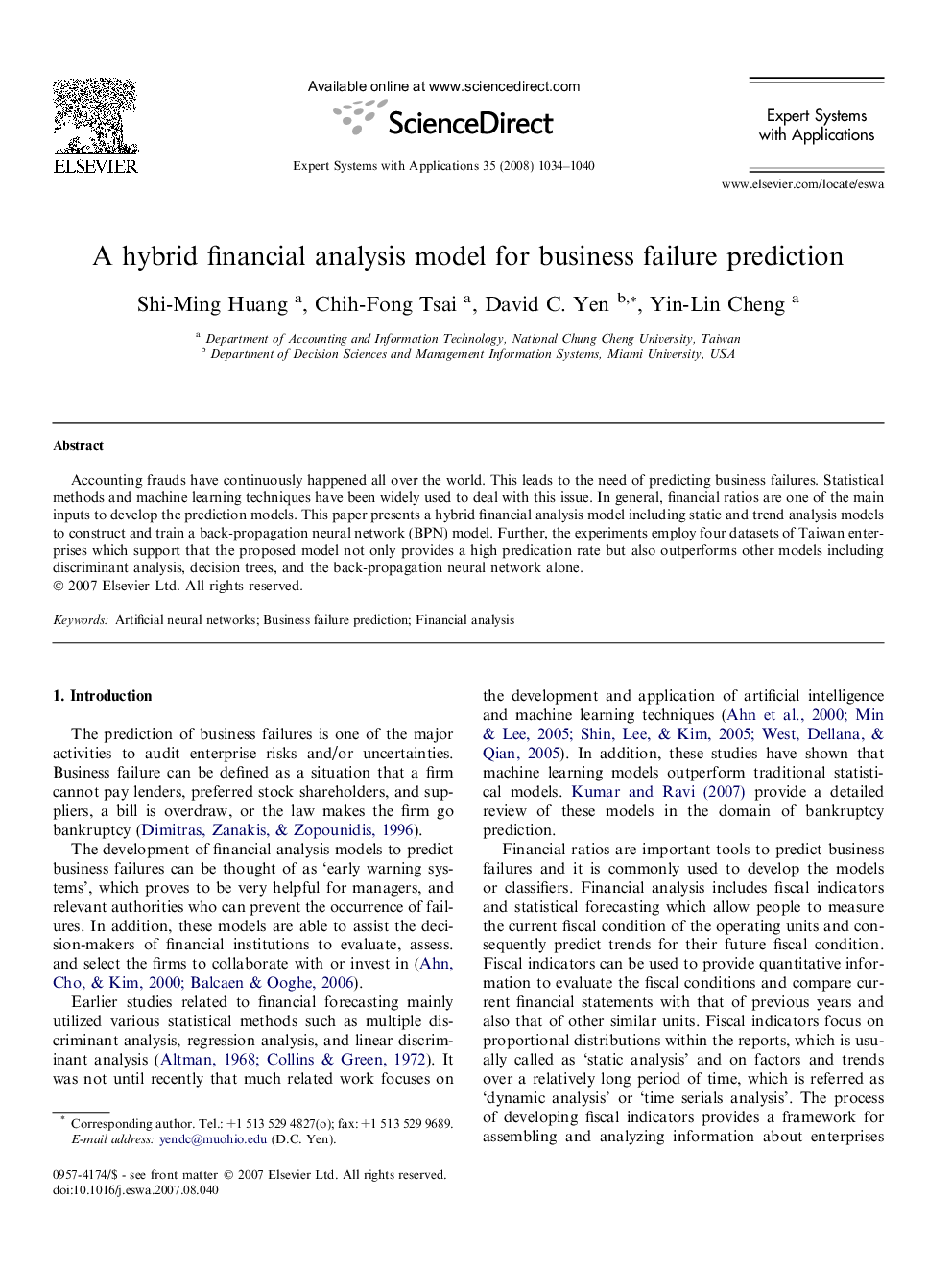| کد مقاله | کد نشریه | سال انتشار | مقاله انگلیسی | نسخه تمام متن |
|---|---|---|---|---|
| 386870 | 660892 | 2008 | 7 صفحه PDF | دانلود رایگان |
کلمات کلیدی
1. مقدمه
2- شبکههای عصبی مصنوعی
شکل 1- شبکه عصبی سهلایه
جدول 1- نسبتهای مالی و اوزان
3- روش تحقیق
3-1 مجموعه داده
جدول 2- نرخهای متغیر طبقهبندی (یک مثال)
جدول3- مثالهایی از اطلاعات ورودی و خروجی
3-2 مدل تحلیل مالی ترکیبی
4- آزمایشات
4-1 روشهای ارزیابی
جدول 4- ماتریس در همریختگی
4-2 نتایج
جدول 5- دقت پیشبینی (بر حسب درصد)
جدول 6- دقت پیشبینی (بر حسب درصد)
4-2-1 مجموعه داده 1
4-2-2 مجموعه داده 2
جدول 7- نتایج پیشبینی
جدول 8- نتایج پیشبینی
4-2-3 مجموعه داده 3
4-2-4 مجموعه داده 4
جدول 9- نتایج پیشبینی
جدول10- مقایسه مدلهای مختلف
شکل 2- خلاصهای از کاربرد سه مجموعه داده اول
4-3 بحث
5- نتیجهگیری
Accounting frauds have continuously happened all over the world. This leads to the need of predicting business failures. Statistical methods and machine learning techniques have been widely used to deal with this issue. In general, financial ratios are one of the main inputs to develop the prediction models. This paper presents a hybrid financial analysis model including static and trend analysis models to construct and train a back-propagation neural network (BPN) model. Further, the experiments employ four datasets of Taiwan enterprises which support that the proposed model not only provides a high predication rate but also outperforms other models including discriminant analysis, decision trees, and the back-propagation neural network alone.
Journal: Expert Systems with Applications - Volume 35, Issue 3, October 2008, Pages 1034–1040
